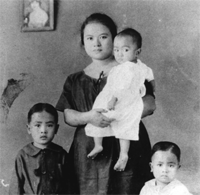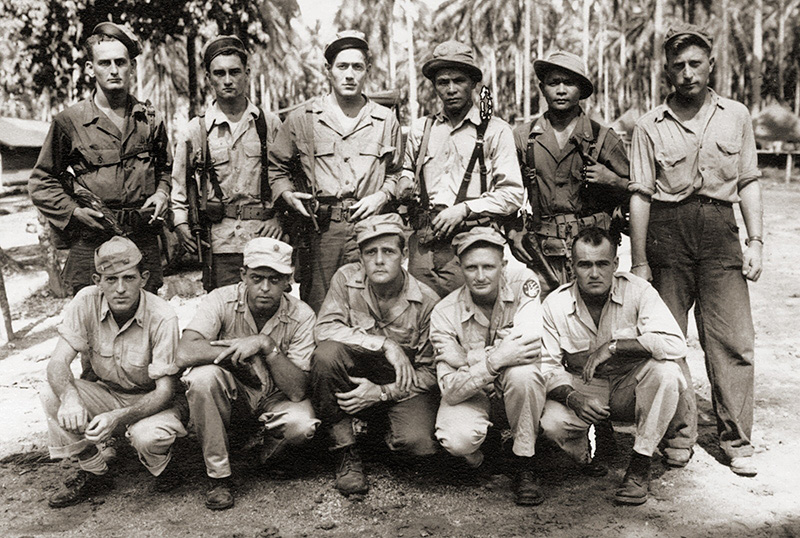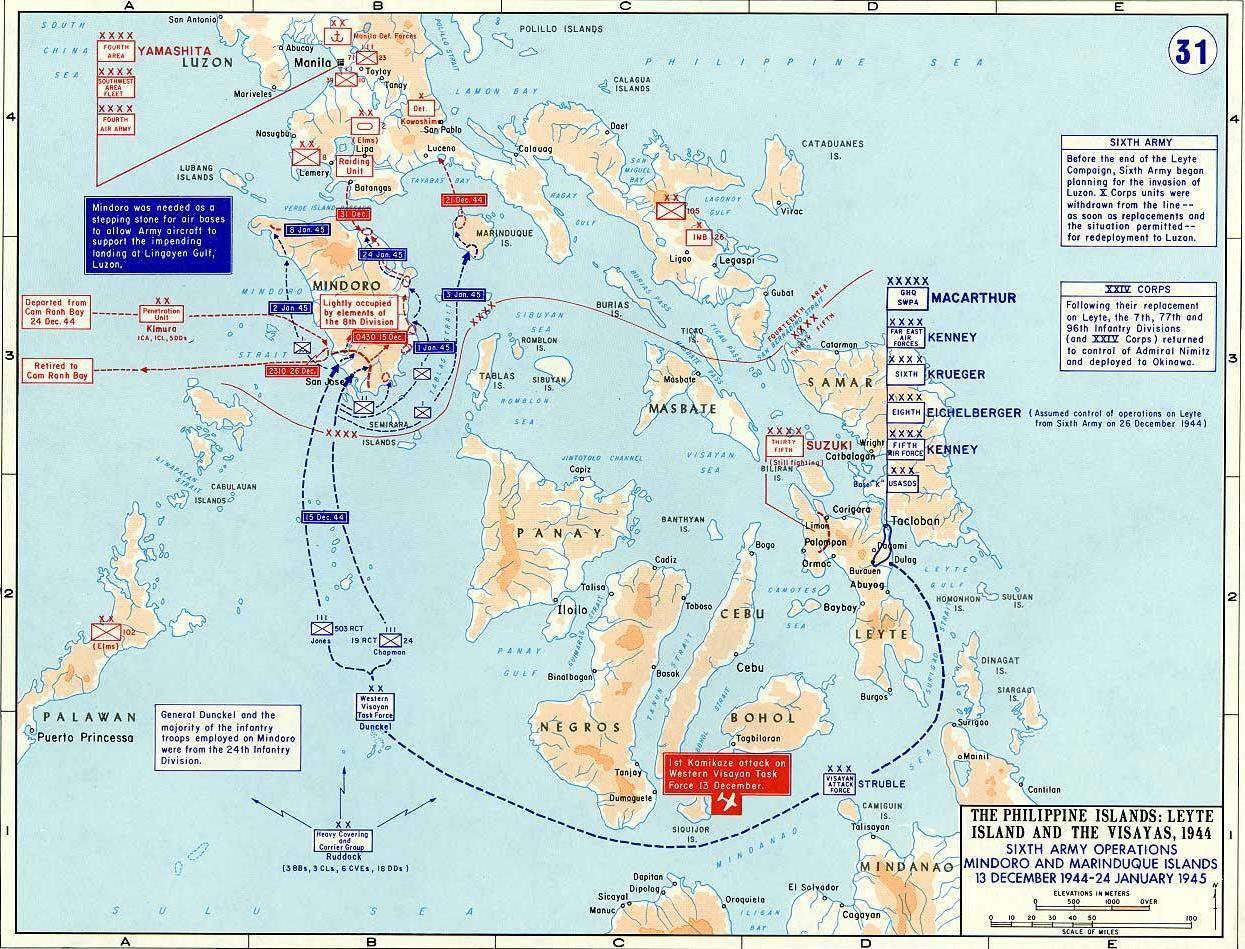


LOYALTY AND VALOR: HAWAI'I'S FILIPINO AND
FILIPINO AMERICAN SOLDIERS
The Philippines Campaign
The Philippines Campaign, October 20, 1944–September 2, 1945, was a series of land, sea and air operations conducted to liberate the Philippines from Japanese occupation. Much of the Campaign has been overlooked in our history books and popular culture in spite of including one of the largest naval battles in world history (Battle of Leyte Gulf), an amphibious landing larger than the Normandy landing, and a decisive vindication of our nation’s worst military defeat (Battle of Bataan). This neglect in our national consciousness has been a reflection of America’s Euro-centric point of reference when imagining and chronicling our national identity.
Even after the Philippines surrender to Japan, General MacArthur received notice of guerrilla forces continuing to fight. To support these groups and gain valuable information for the liberation of the Philippines, General MacArthur sent highly trained commandos, or special ops units, behind enemy lines to conduct covert missions. Members of the 1st and 2nd Filipino Infantry Regiments, especially those with language skills, were select and assigned to the Alamo Scouts and the 5217th Reconnaissance Battalion (later, 1st Reconnaissance Bahala Na Battalion).
The Alamo Scouts, a reconnaissance/raider unit organized in New Guinea, conducted intelligence and covert operations before the main U.S. invasion. The Alamo Scouts transformed from a reconnaissance unit to a sophisticated intelligence-gathering group that coordinated large-scale guerrilla operations on Leyte and Luzon. As the special forces precursor to the Green Berets, the Alamo Scouts have the finest record of any elite unit of World War II.

The 5217th Reconnaissance Battalion (later, 1st Reconnaissance ‘Bahala Na’ Battalion) was organized and trained to be MacArthur’s "eyes and ears" in the Philippines. These men were transported and trained in para-trooping, sharpshooting, jujitsu, demolition, and radio operations at secret camps in Australia and, then, transported to the Philippines via submarines. As spies, they would relay Japanese logistics information back to MacArthur, as well as conduct demolition missions.

Over 1,500,000 U.S. and Allied forces fought against over 530,000 Japanese forces and while U.S and Allied forces suffered over 79,000 casualties, Japan suffered over 400,000 casualties. In the sea the U.S. and its Allies lost over 33 ships and nearly 500 planes, whereas Japan’s naval strength was decisively obliterated losing over 93 ships and 1,300 aircraft. It was also during this campaign that Japan, experiencing a shortage of skilled pilots, first sent thousands of their own young men to their death in organized Special Attack Unit (tokkotai) operations.

The various roles, contributions and sacrifices of Filipinos and Filipino Americans during American colonial rule and throughout the Pacific War and, especially, in the Philippine Campaign would forever influence America's military strategies, from U.S. counterinsurgency tactics, to the 'textbook' air/sea/land prison raid at Los Banos, and to the covert operations by special ops units before General MacArthur’s "I have returned" landing at Leyte.
HOME |
Filipino-American
Historical Society of Hawaii
|
Help
Exhibits
| Publications
|
Collections
| Student/Teachers
Photographs
& Maps | Biographies & Oral Histories
| Community Organizations
WWI
Veterans | Centennial
Commission (2006)
Copyright © 2006 by the Filipino-American Historical Society of Hawaii. Updated 2020.